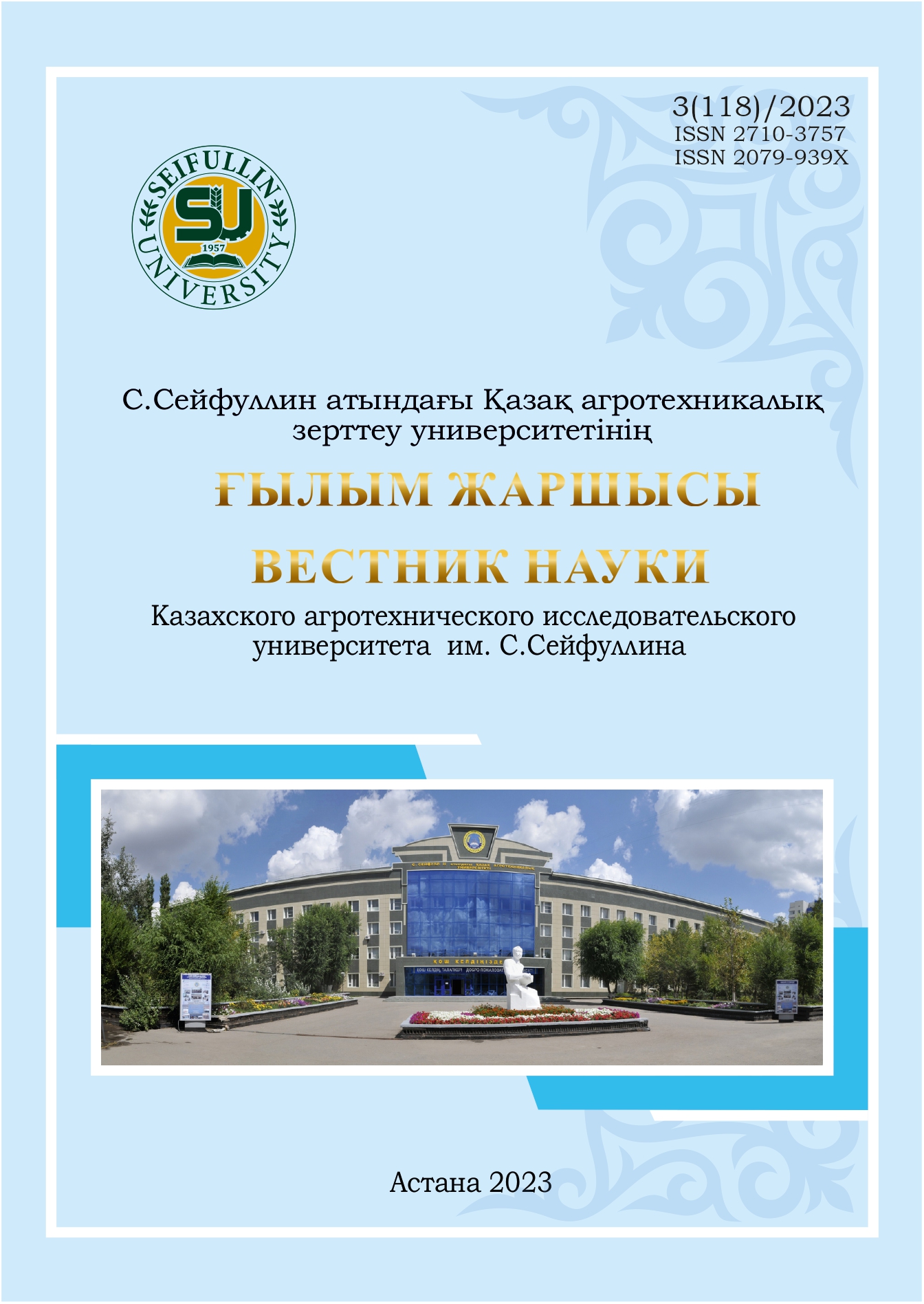PRODUCTIVITY OF OILSEED FLAX (LINUM USITATISSIMUM) KUSTANAI AMBER DEPENDING ON THE ELEMENTS OF AGRICULTURAL TECHNOLOGY IN THE CONDITIONS OF THE DRY STEPPE OF NORTHERN KAZAKHSTAN
DOI:
https://doi.org/10.51452/kazatu.2023.3(118).1527Keywords:
oilseed flax; sowing dates; seeding rates; crop structure; productivity.Abstract
The article presents two-year results of research to identify, in the conditions of the dry steppe of Northern Kazakhstan, optimal sowing dates, sowing rates of oilseed flax Kustanai amber on two nutrition backgrounds P0 and P90. The elements of the productivity of the oilseed flax plant Kustanai amber (the number of pods, the mass of seeds of the plant, the number of seeds of fusion, the mass of 1000 seeds) were formed on a fertilized background with a relatively uniform ratio, a slight predominance was manifested in the development of such an element of the crop structure as: the mass of 1000 seeds (M1000 - 24.8 29.8% of the total productivity of the plant) and the mass of seeds from the plant (Ms - 21.7-26.3%). The mass of 1000 seeds (32.5- 37.9%) dominated the productivity of the plant against an unfavorable background. The formula of plant productivity in the control variant (without fertilizers) is represented by the elements - 1000-Seed Mass, number of capsules, the number of seeds from the plant, capsules mass per plant. The same elements on a fertilized background. On unfertilized soil, the yield level was significantly lower on average over two years and amounted to 11.0 c /ha, - against the background of P90 -17.2 c/ha. In the arid 2021, the highest productivity of oilseed flax was manifested on fertilized (15.9 c/ha) and non-fertilized (11.8 c/ha) backgrounds at sowing on 20.05 with a seeding rate of 5.0 million v.s. per ha. In a more favorable humidification year of 2022, the highest productivity (18.6 c/ha) was formed on crops of the 15.05 period with a norm of 6.0 million c.s. per ha. The same pattern was observed on a unfertilized soil with a yield of 10.3 c/ha.

